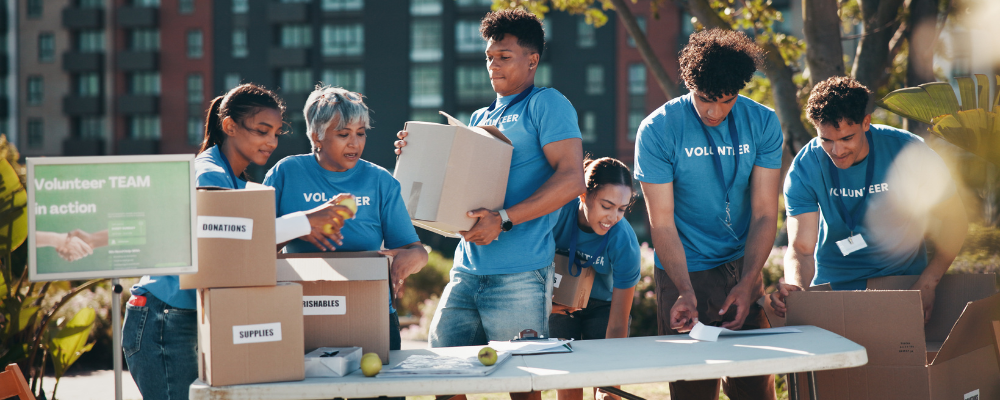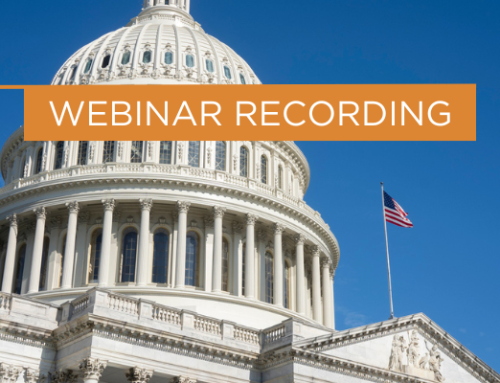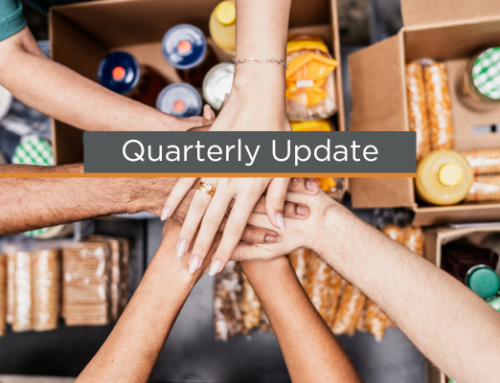Key points covered in this article:
- The One Big Beautiful Bill Act (OBBBA) introduces significant changes for nonprofits, including new tax rules for individual and corporate giving, such as a universal charitable deduction starting in 2026 and a 1% giving floor for businesses to qualify for deductions.
- Federal funding cuts to programs like Medicaid and SNAP are expected to increase demand for nonprofit services, with many organizations needing to adapt quickly to manage rising needs and reduced resources.
- Nonprofits are encouraged to diversify revenue streams, engage donors with story-focused messaging, and strengthen corporate partnerships to navigate the challenges and opportunities presented by OBBBA.
When Congress passed the One Big Beautiful Bill Act (OBBBA) on July 4, 2025, nonprofits immediately began asking what it would mean for them. The law is broad, but two parts stand out. One changes how donations from individuals and corporations are handled for tax purposes. The other reduces funding for social programs, which is expected to increase the need for nonprofit services.
Most of the tax provisions take effect on January 1, 2026. The cuts to federal programs start sooner, in October 2025, which means some organizations will feel the impact months before the new tax rules begin. Nonprofits that take time now to understand the law and prepare will be in a stronger position to manage what comes next.
Key Provisions Affecting Nonprofits
Several provisions in the new law directly affect nonprofits and charitable giving:
Individual Giving
Starting in 2026, people who do not itemize will be able to deduct up to $1,000 in charitable gifts, or $2,000 for joint filers. This may encourage smaller donors who previously did not receive a tax benefit to give more.
For itemizers, contributions will only count once they exceed 0.5% of adjusted gross income. High-income taxpayers will also see limits on how much tax relief they get for each dollar donated. These changes may cause some donors to rethink the size or timing of their gifts, but many will continue giving because of the mission itself.
The charitable deduction cap has also been permanently raised from 50% to 60% of adjusted gross income (AGI). That gives donors with larger goals a little more room to deduct their gifts.
Corporate Giving
Businesses must now give at least 1% of taxable income to qualify for a deduction. The 10% ceiling still applies, and any contributions above that cap can be carried forward for up to five years. For example, a company with $100,000 of taxable income that contributes $5,000 would first have to meet the $1,000 floor. That amount is not deductible. The remaining $4,000 would qualify as a deduction.
University Endowment Excise Tax
OBBBA changes the excise tax on large private university endowments. It now applies to nonprofit institutions with at least 3,000 tuition-paying students and a student-adjusted endowment (defined as total endowment assets divided by the number of tuition-paying students) above $500,000 per student. The tax is based on endowment assets per student:
- 4% for endowments between $500,000 and $750,000 per student
- 0% for endowments between $750,000 and $2 million per student
- 0% for endowments exceeding $2 million per student
Highly Compensated Employees
Nonprofits will owe a 21% excise tax on employee compensation above $1 million. The tax applies to all employees, not just the five highest paid as in years past. It is also retroactive to any individual employed during a taxable year beginning after December 31, 2016. Larger institutions such as hospitals, universities, and national nonprofits are the most likely to see a change in tax liability here.
Unrelated Business Income Tax
OBBBA does not change the rules for unrelated business income, which means nonprofits that earn revenue outside their exempt purpose must continue to follow the existing requirements. These activities can help organizations make up for funding shortfalls, but they come with strict rules. Any revenue not substantially related to the mission must be reported and is subject to tax. Nonprofits are encouraged to speak with their advisors before updating UBIT strategy.
Federal Funding Cuts and Rising Demand
OBBBA also reduces federal support for major safety-net programs. Medicaid is projected to be cut by about $1 trillion over the next decade, with an estimated 12 million people expected to lose health coverage or benefits. These cuts could force some rural hospitals to close or scale back services. Food assistance will be reduced by roughly $186 billion, which could result in 3 million individuals losing access to SNAP.
The real problem is timing. Cuts on this scale will not be felt gradually. Many nonprofits already work with slim budgets and small teams, so even a small surge in need can tip programs into the red. Leaders are likely going to watch their numbers closely and plan for increased demand.
In the short term, some groups will look for partners to share costs. Others will cross-train staff to take on more than one role or possibly outsource specific tasks rather than add payroll. These steps will not replace lost federal support, but they can help keep services available while looking for longer-term solutions.
Planning Ahead
Looking ahead, nonprofits will need to revisit how they engage with donors. The universal deduction creates an opening to connect with individuals who may not have given in the past, and even modest contributions can now carry a tax benefit. At the same time, established supporters will still need to learn about impact, so story-focused messaging that blends both audiences will be important.
Corporate partnerships will need a similar level of attention. They will need to know about the new 1% giving floor and what that means for their donation dollars. Companies may be more deliberate in deciding where to give. Nonprofits that show a clear fit with a company’s values and create real ways for employees to get involved will likely have an advantage.
Revenue diversity is also becoming more important. Nonprofits are looking at mid-level donor programs, easier options for monthly giving, and closer relationships with community foundations as ways to improve cash flow. Some are also beginning to review policies on gifts like cryptocurrency to see whether they fit into long-term plans.
Outside of OBBBA, the Single Audit threshold has moved from $750,000 to $1 million in federal funds, starting with fiscal years beginning on or after October 1, 2024. That means certain organizations may avoid a full audit. However, many supporters will still expect clear financial reports and evidence of impact.
Conclusion
OBBBA presents a mix of challenges and opportunities for nonprofits. The most effective response will be a proactive one. Organizations that take time now to understand the changes, adjust their messaging, and reinforce donor relationships will be in a better position to adapt. For more information on how the OBBBA affects your nonprofit, contact PBMares Not-for-Profit Partner Bo Garner.
Watch the webinar and download the slides: https://www.pbmares.com/webinar-obbbas-impact-on-not-for-profits/





